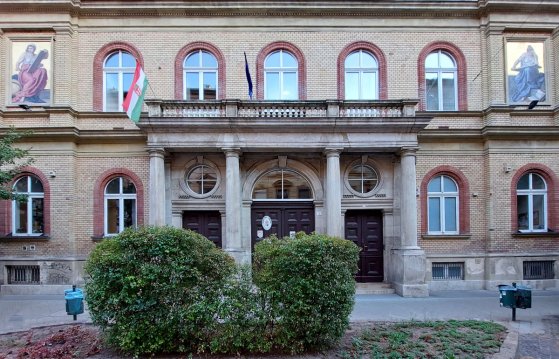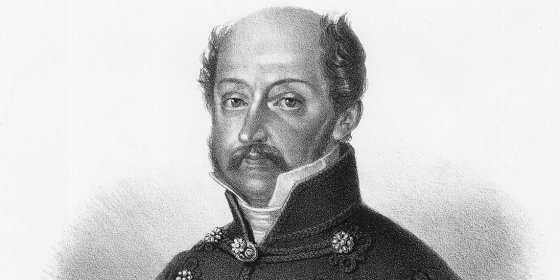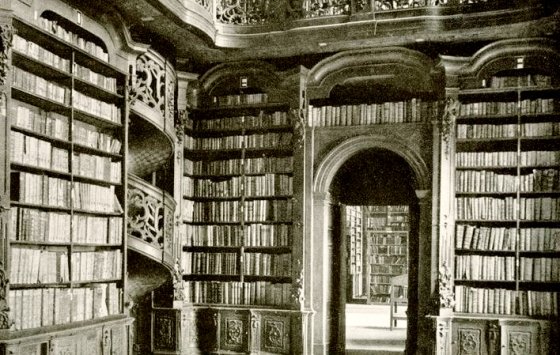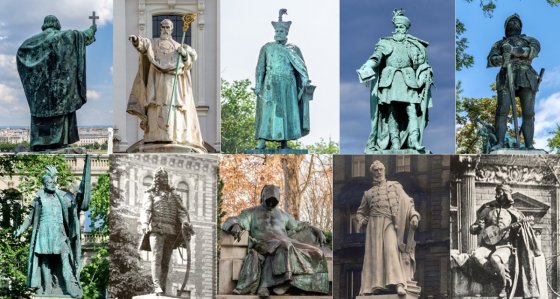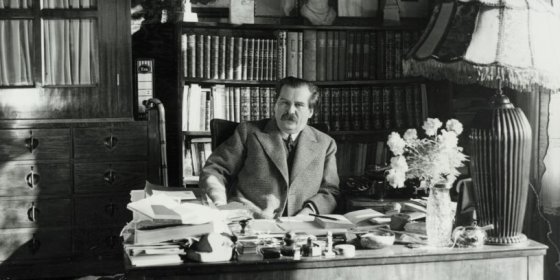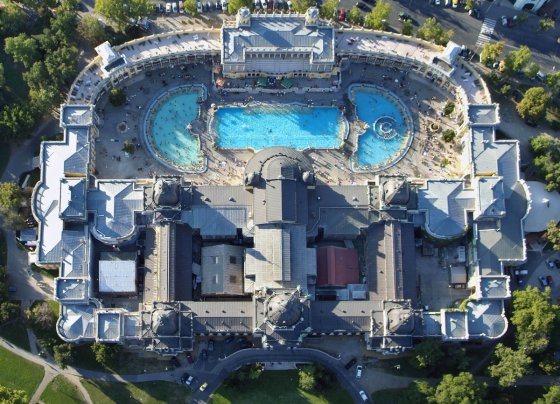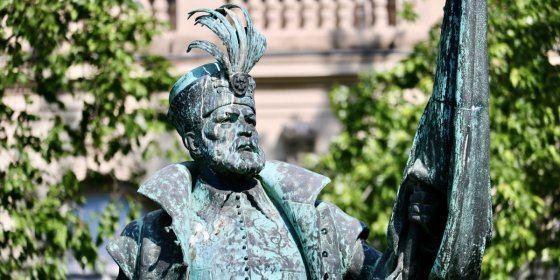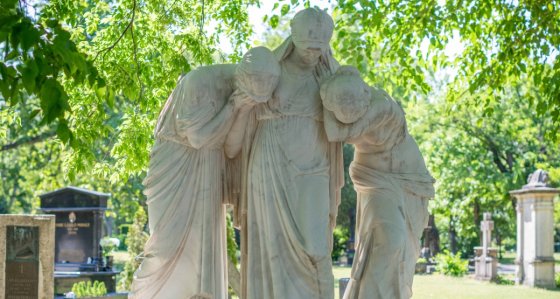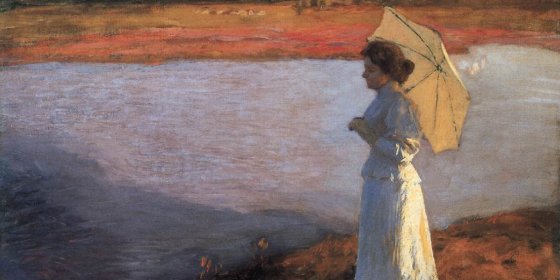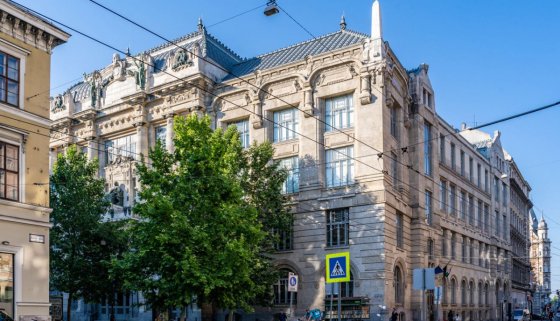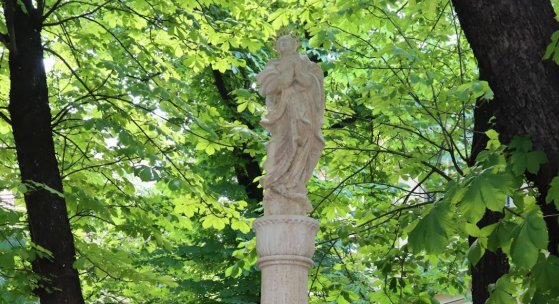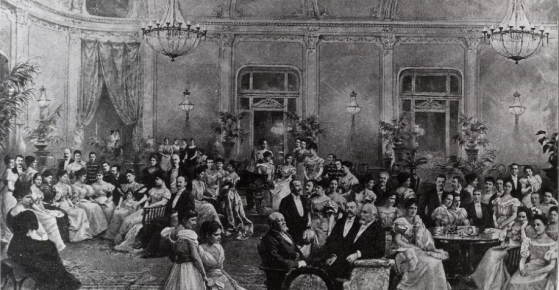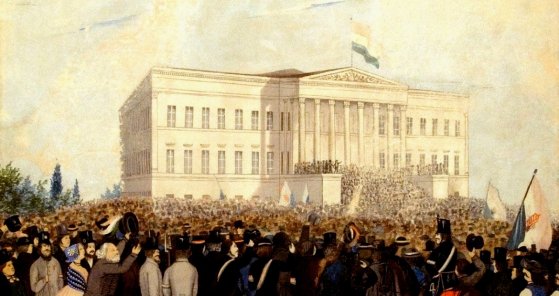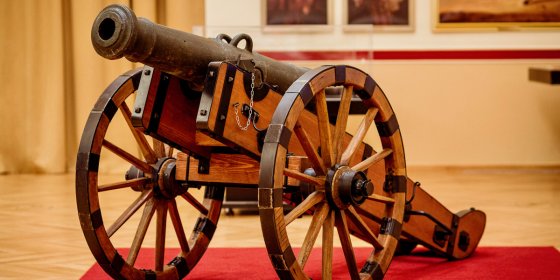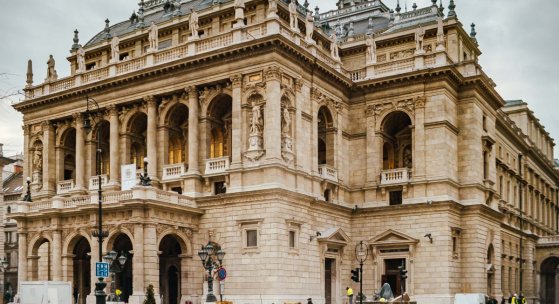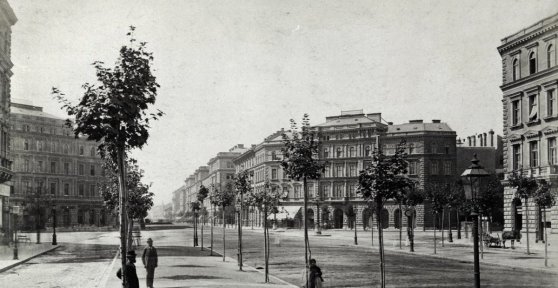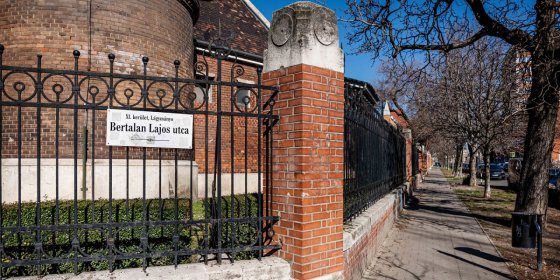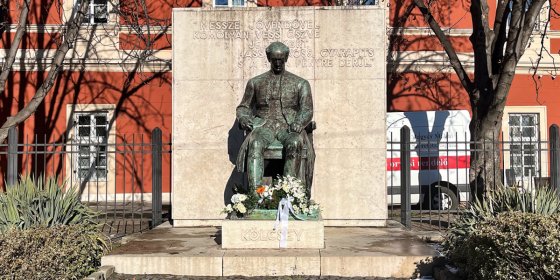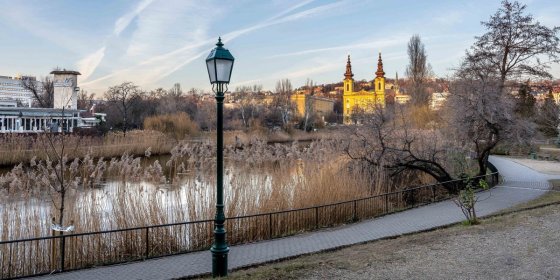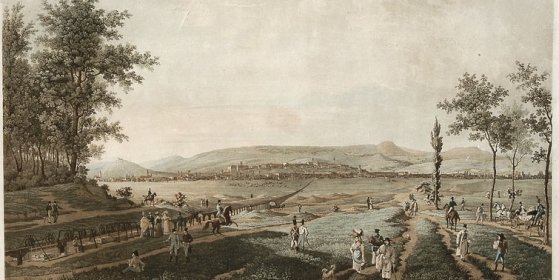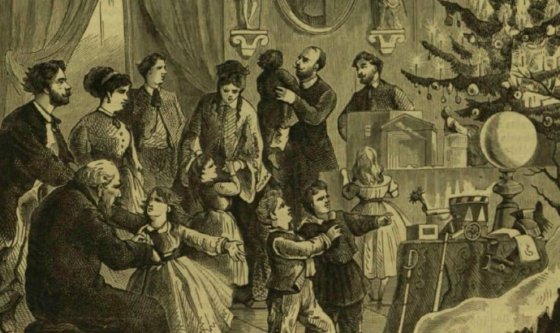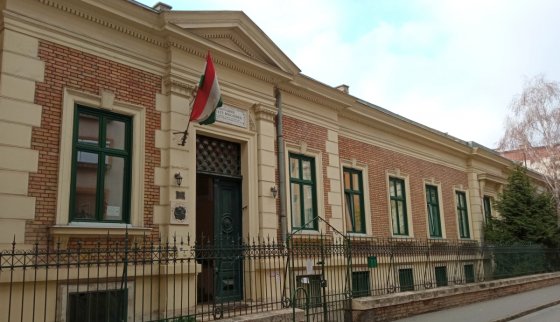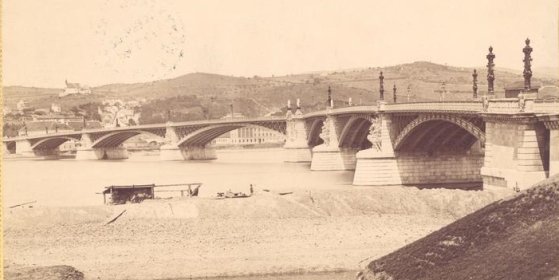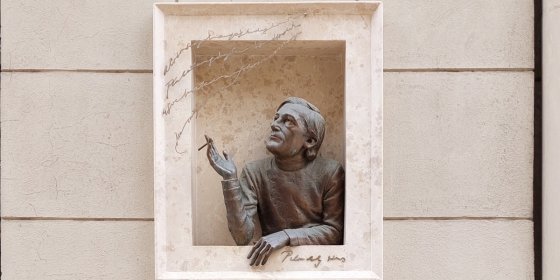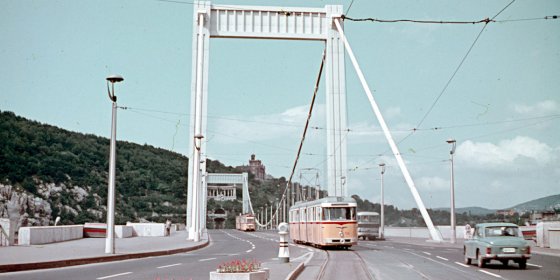 The „intertwined history” of the bridges and the city of Budapest
Which ideas and events have shaped the fate of bridges of Budapest and the cityscape? Alongside many other interesting facts, this question is also answered this newly published book by the Budapest City Archives, which introduces the history of bridges in Budapest.
The „intertwined history” of the bridges and the city of Budapest
Which ideas and events have shaped the fate of bridges of Budapest and the cityscape? Alongside many other interesting facts, this question is also answered this newly published book by the Budapest City Archives, which introduces the history of bridges in Budapest.
Heritage
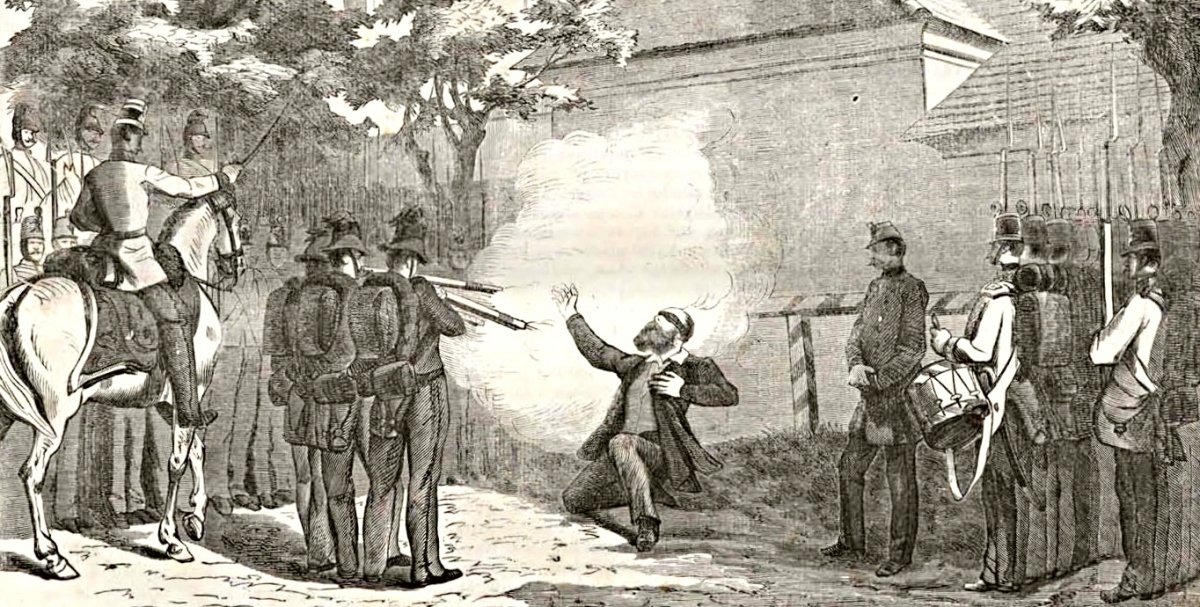 The Pest stations of a life: A tragic fate that befell Lajos Batthyány
The Pest stations of a life: A tragic fate that befell Lajos Batthyány
October 6, 2022 at 10:00 AM
On 6 October, Hungarians remember not only the 13 generals of the army executed in Arad, but also Count Lajos Batthyány, the martyred Prime Minister of Hungary's first responsible government, who was executed in Pest, in the courtyard of the New Building. An eternal flame has stood at the place of the execution since 1926, a worthy memorial to the count, who gave his life for Hungarian freedom. Batthyány, who became the leader of the opposition during the reform era, moved to Pest in 1841, visited many notable places in the capital, and Pestbuda now collected these on the tragic anniversary.
Imre Madách Secondary School moved into its current home 130 years ago
October 5, 2022 at 11:00 AM
In September 1892, the 7th District State Secondary School, i.e., today's Imre Madách Secondary School, welcomed not only the new academic year but also its new home. The institution, founded in 1881, did not have its own building for more than 10 years, teaching took place on rented premises. The Minister of Religion and Public Education in charge of educational affairs, Ágoston Trefort, commissioned the architect János Bobula Sr. to prepare the plans for the secondary school. But Trefort passed away in the meantime, and the new minister had other ideas about the school building.
The Pest audience adored his love poems - Sándor Kisfaludy was born 250 years ago
September 27, 2022 at 11:00 AM
Sándor Kisfaludy's first volume, Himfy szerelmei - A kesergő szerelem [Himfy's Loves - The Bitter Love], published in Buda in 1801, was a worthy opening of 19th-century Hungarian literature. Kisfaludy, who described his passionate love life in lyrical form, became an influential scientist and writer at a young age and was elected a member of the Hungarian Society of Scientists and the Kisfaludy Society. With his support, his brother Károly Kisfaludy published his famous yearbook, Aurora, which promoted Hungarian literature. Sándor Kisfaludy was born 250 years ago today.
The National Széchényi Library was founded 220 years ago
September 26, 2022 at 3:30 PM
After the foundation of the National Library 220 years ago, the donation of Count Ferenc Széchényi wandered for more than forty years, until it moved to its permanent place, the Hungarian National Museum. Later, the collection had to go from here as well, now Pestbuda will present the different locations in Pest.
The gift of the King: the legend of the ten statues
September 25, 2022 at 3:30 PM
It has been 125 years since Franz Joseph gave ten statues to Budapest on 25 September 1897. Most of the statues are still elegant decorations of the city to this day, and Pestbuda reported about them several times. However, we have now looked into what could have prompted Franz Joseph to give a gift.
The Pest homes of Zsigmond Móricz, who died 80 years ago
September 15, 2022 at 9:00 AM
Not only Dezső Kosztolányi (Üllői úti fák [Trees of The Üllői Road]) but also Zsigmond Móricz could come to our mind when we think of Üllői Road. One of the most famous authors of 20th-century Hungarian realist prose literature lived for twenty years in his home on Üllői Road, where such defining works as Tragédia [Tragedy] and Légy jó mindhalálig [Be Faithful Unto Death] were written. After the suicide of his first wife, the writer moved to an apartment building on Fővám Square with his daughters and then lived for a short time in an apartment in a pre-modern style house on Bartók Béla Road. Zsigmond Móricz, whose name is preserved by public works, public institutions, literary scholarships and numerous public spaces, died eighty years ago.
Where the Nyugat editors' favourite coffee house operated - The Krausz Palace was built on Sugárút
July 27, 2022 at 10:30 AM
The former Krausz Palace is located on 12 Andrássy Avenue, the capital's most representative road. Its designer, Zsigmond Quittner - the creator of the Gresham Palace - was only 27 years old when he designed this spectacular apartment building for the order of the wealthy manufacturer Lajos Krausz. Famous artists such as Károly Lotz, Gyula Donáth, and József Róna participated in the decoration of the house, built in 1885, whose works can be seen on the Opera House, Vigadó, and the National Bank building, among others. The Magyar Korona Coffee House later operated on the ground floor, which was also a favourite place for the editors and authors of the Nyugat.
Baths from above - As seen by the birds
July 24, 2022 at 1:00 PM
In the raging summer, many people cool off in Budapest's well-known spas, which are not only attractive because of their healing effects and mineral-rich waters, but most of them are also tourist attractions and represent an inestimable value within our architectural heritage. Many people know these masterpieces inside and out, but perhaps few have seen them from above. From this special point of view, the surroundings of the baths can be seen in aerial photos.
Gift of Franz Joseph - the statue of Miklós Zrínyi and Gábor Bethlen was inaugurated on Kodály Körönd 120 years ago
June 2, 2022 at 3:00 PM
King Franz Joseph decided 125 years ago to donate ten statues to the nation, and he himself would cover the costs of making public works of art that would depict the famous personalities of the Hungarians. The first two of these monuments were inaugurated 120 years ago on the Kodály Körönd, but today only the first of the statues of Miklós Zrínyi and Gábor Bethlen can be seen in its original location. On the occasion of the anniversary, we followed the fate of the statues of the Kodály Körönd in the last century.
Masterpieces of tomb art on Fiumei Road - The graveyard that is known as a sculpture park
May 28, 2022 at 9:00 AM
The Fiumei Road Cemetery deserves special attention not only as a resting place for the country's greats, but also the sculptures and works of art belonging to the tombs are invaluable. From now on, visitors can use their phones to get to know them more thoroughly: they can read about the most outstanding sculptures and their creators with the help of a QR code.
Béla Iványi-Grünwald, a popular figure in art life in Budapest, was born 155 years ago
May 16, 2022 at 12:00 PM
Among the innovators of Hungarian painting at the turn of the century, we consider Béla Iványi-Grünwald, who was born 155 years ago. He studied at the Mintarajziskola [Design School] on Andrássy Avenue, later becoming a popular and defining figure in Budapest's art life, one of the founders and core members of the Fészek Klub [Nest Club]. He is also the founder of the Nemzeti Szalon [National Salon], an association of artists dissatisfied with official art policy, with its headquarters in Erzsébet Square. When he died at János Hospital in 1940, his contemporaries said goodbye not only to a talented artist but also to an always cheerful social man.
The new building of the Liszt Academy was handed over 115 years ago
May 12, 2022 at 10:00 AM
The palace of Liszt Academy in Liszt Ferenc Square was handed over on 12 May 1907, just 115 years ago. One of the most important buildings in the field of music was designed by the excellent architects Kálmán Giergl and Flóris Korb, but the outstanding craftsmen of the age also took part in the works. The architects worked on the plans for years to erect a modern building decorated with Hungarian elements according to the customer's request.
The restored Immaculata statue in Krisztinaváros is back to its place - its original was erected 320 years ago
May 6, 2022 at 8:00 PM
Another sculpture with a long history was renewed in the capital: the Immaculata statue in Krisztinaváros, erected 320 years ago in 1702 - the oldest public sculpture in Budapest - has been replaced by a copy since 1928, and in the meantime this work has also needed to be restored. The work was carried out at the Department of Restoration of the Hungarian University of Fine Arts recently, and yesterday the sculpture was placed at the Krisztina Square erection site.
Studio in the Inner City - The Strelisky photographer dynasty in Budapest
April 20, 2022 at 10:00 AM
Lipót Strelisky was one of the first to deal with daguerreotypes in Budapest in the 1840s. In his studio in Dorottya Street, he photographed the politicians, aristocrats and artists of the age. His son, Sándor Strelisky, who died a hundred years ago, was the first photographer in Hungary to take multi-character photographs with a special technique. Strelisky photos are invaluable today and help us learn about Budapest's past.
Sándor Petőfi lived in several places around the National Museum
March 13, 2022 at 11:00 AM
At the beginning of March 1848, the National Museum was one of the most important places in the life of the youth of March, including Sándor Petőfi. Half a decade earlier, Petőfi's life was also connected to this area at several points, as the main locations of his stay in Pest in 1843 and 1844 can be found in the area around the museum. There were several buildings in the area that no longer exist today, where the poet visited for a short time or was just renting accommodation.
Áron Gábor's copper cannon in the Buda Castle - The people of Budapest can see the artillery device known from the folk song with their own eyes
March 12, 2022 at 5:30 PM
The only authentic copper cannon connected to Áron Gábor, which is known from the famous folk song, can be seen in a worthy place, in the building of the reborn Guard House at the Buda Castle. At the exhibition on the War of Independence of 1848-49, visitors can admire the cannon itself, but there are many other interesting objects associated with the revolution and the period of retaliation shown in the building.
After almost 5 years, the renovated Opera House opens its doors today
March 12, 2022 at 2:00 PM
Restoration work began in the building of the Hungarian State Opera in October 2017. The renovation, which lasted for almost 5 years, not only serves to further illuminate one of the architectural gems of Budapest, but it also represents the basic requirements of the 21th century. The history of the construction of the Opera House also proves that these requirements have changed from time to time.
Its construction has caused controversy, today it is one of the most elegant parts of the capital - the Andrássy Avenue
March 9, 2022 at 10:00 AM
One hundred and fifty years ago, on 9 March 1872, the contract was signed, with which the construction of the representative avenue of Pest, Andrássy Avenue, could actually begin. The design of the route strongly divided the public, with many seeing it as a luxury investment serving the needs of the aristocracy. Soon after its opening, it became clear that the result went beyond all gentlemanly whims: it was one of the most important urban development enterprises of the second half of the 19th century.
Development of the Aquincum Museum has begun - the wonders of ancient monuments are presented in an experiential way
February 28, 2022 at 12:00 PM
The long-awaited development work has begun at the Aquincum Museum, during which a completely new experience wall will be built on the site of the rusty iron fence on Szentendrei Road and a new exhibition will be created to give a glimpse into the lives of the Romans who once lived here. Orsolya Láng, the director of the museum, told Pestbuda exactly what is changing.
History on the map - What do Budapest's street names tell us?
February 25, 2022 at 12:00 PM
Browsing the street names in Budapest, the question may arise: who did the streets and squares we pass through every day get their name from? A recent interactive map that can be browsed by anyone can help you navigate the maze of names: for example, it is clear that real people can be namesakes as well as fictional characters, and some eras, such as the 19th century, gave the city far more names than others. We tried out the interactive map and came across exciting connections.
Chain Bridge candelabras: oil lamps shine when handed over, now LED lighting is being installed
February 13, 2022 at 11:00 AM
We signed a contract with the Moon for the lighting of the Chain Bridge: this is how the front page of a funny paper complained in in the middle of the 19th century that the visibility on the first bridge in the capital was poor. The candelabras of the Chain Bridge, currently under renovation, will be restored to their 1914 condition, but will be equipped with energy-saving LED lights. Since the handover of the bridge in 1849, the lighting has changed several times, these are shown below.
The fate of the Kölcsey statue: the Romanians beheaded it, the people of Budapest recreated it
January 22, 2022 at 12:00 PM
The story of Ferenc Kölcsey's first statue in Budapest is very adventurous: the statue of the poet, which was inaugurated in Batthyány Square in 1939 and looked down from a low platform, was able to watch the passers-by from a much more worthy place decades ago. The original of the work in Budapest was inaugurated 125 years ago, hundreds of kilometers from its present location, in Nagykároly. In our article, on the occasion of the Hungarian Culture Day, we present the reasons why the work of art came from Transylvania to Budapest and why it was moved from its original place in Batthyány Square.
The Bottomless Lake: a romantic landscape in Újbuda
January 21, 2022 at 9:00 AM
One of the emblematic sites of Szentimreváros in the 11th District is the Bottomless Lake, which was artificially created in the late 19th century. The workers of the brick factory operating on the site of today's Kosztolányi Dezső Square accidentally cut through a deep watercourse, the stratum water burst to the surface and slowly filled the clay bed. The Bottomless Lake and its shores were neglected until the middle of the last century, where rubble and ruins were carried here during the two world wars. However, between 1958 and 1960, it was put in order and a park was established around it, and since then it has been a popular place for the citizens.
A traveling exhibition presents the history of Királydomb in Rákosmező
January 13, 2022 at 4:00 PM
A national memorial site was born! The Community of Hungarian Patriots presents the Királydomb in Rákosmező at a traveling exhibition entitled. In today's Kőbánya, next to the Rákos stream, the installation depicts the scene of medieval parliaments with the help of period documents and authentic depictions. The aim of the exhibition is to bring back to the national memory the place declared by the Parliament to be a national memorial in 2020, but undeservedly forgotten in the public consciousness. The exhibition also includes a copy of the famous Rákosi order issued in 1505.
The first Christmas tree - The custom of decorating pine trees is almost two hundred years old in Budapest
December 24, 2021 at 9:00 AM
It is certain that the Christmas tree appeared in Pest-Buda in the first decades of the 19th century, but it has not yet been possible to find out exactly who decorated the first tree. According to most sources, Countess Teréz Brunszvik played a major role in spreading the custom: on 24 December 1828, the children could have surrounded the Christmas tree in the kindergarten she had founded in Buda, in today's Mikó Street, but it is possible that decorated pine trees appeared earlier in the homes of aristocratic families.
The most beautiful nursery in Pest was designed by Miklós Ybl
December 2, 2021 at 2:00 PM
At the corner of the Nagy templom and Nap Street in Józsefváros is a beautiful house made in the Neo-Renaissance style. It is already important because of its designer, Miklós Ybl, but the client, the First Pest Nursery Association, also makes the building - still operating in education - special.
A French bridge in Budapest - The Paris engineer submitted the plans for the Margit Bridge 150 years ago
December 1, 2021 at 10:00 AM
The designer and contractor were sought for the Margit Bridge in an international design competition. There was a lot of discussion about the location of the bridge, as the second bridge of Budapest, which was still waiting to be united at the time, was imagined by many people elsewhere, in the southern part of the city. The tender was won by a French engineer who also built the bridge, which was very similar to the way we know Margit Bridge today.
The poet and Budapest - János Pilinszky was born 100 years ago
November 27, 2021 at 9:00 AM
Budapest gave Pilinszky the experience of the city: when he was young, he absorbed the colours and atmosphere, and although he got to know many big cities in the world (he visited Rome, Paris, London, Vienna or New York), the real remained Budapest for him. The poet, born 100 years ago, spent his infancy in the city centre, in the immediate vicinity of the Károlyi Garden, he lived with his family for long in Molnár Street, he got his first home on Izabella Street at the age of forty. Cafés, editorial offices, bars and cinemas were also important venues for his life and poetry.
The Garden of Philosophy was inaugurated on Gellért Hill 20 years ago
October 18, 2021 at 10:00 AM
The sculpture composition called Garden of Philosophy has been standing on Gellért Hill for twenty years now. The work, which depicts the world's leading thinkers and founders of world religions, was donated to Budapest by Nándor Wagner, a sculptor of Hungarian origin living in Japan.
The roaring Bengali - The first articulated trams were not a success in Budapest
October 17, 2021 at 9:00 AM
By the end of the 1950s, the existing trams in Budapest proved to be increasingly too small, so a new, more accommodating, articulated tram was built by Hungarian engineers, the Bengali. The recipe was simple, the type was spacious and shapely, yet the first articulated trams that appeared in Budapest were not clearly successful.
More articles
 The „intertwined history” of the bridges and the city of Budapest
Which ideas and events have shaped the fate of bridges of Budapest and the cityscape? Alongside many other interesting facts, this question is also answered this newly published book by the Budapest City Archives, which introduces the history of bridges in Budapest.
The „intertwined history” of the bridges and the city of Budapest
Which ideas and events have shaped the fate of bridges of Budapest and the cityscape? Alongside many other interesting facts, this question is also answered this newly published book by the Budapest City Archives, which introduces the history of bridges in Budapest.
 The Bridge Report, which brought a turning point in the history of Budapest
A travel report that changed the history of Pest and Buda, as well as Hungary. The little book contributed to the change of half a thousand years of legal customs and the implementation of an investment of unprecedented size and technical quality. This book was The Bridge Report [Hídjelentés in Hungarian].
The Bridge Report, which brought a turning point in the history of Budapest
A travel report that changed the history of Pest and Buda, as well as Hungary. The little book contributed to the change of half a thousand years of legal customs and the implementation of an investment of unprecedented size and technical quality. This book was The Bridge Report [Hídjelentés in Hungarian].
 Drama on the university wall - The heroic monument was planned 95 years ago
In the constant hustle and bustle of the Egyetem Square in Pest, the students may not even notice the monument that decorates the short section of wall between the church and the central building of ELTE. However, it commemorates their predecessors, the heroes who fought for their country in World War I, and those who heroically helped them. The first design of the dramatically collapsing soldier was born in 1928, ninety-five years ago.
Drama on the university wall - The heroic monument was planned 95 years ago
In the constant hustle and bustle of the Egyetem Square in Pest, the students may not even notice the monument that decorates the short section of wall between the church and the central building of ELTE. However, it commemorates their predecessors, the heroes who fought for their country in World War I, and those who heroically helped them. The first design of the dramatically collapsing soldier was born in 1928, ninety-five years ago.

